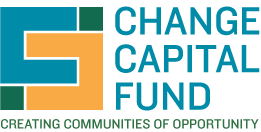Technical Assistance Helps Grantees Measure and Improve Impact
|
|
In addition to the $1 million CCF provides each of its four grantees, the funding collaborative also provides technical assistance. Here, TA provider Celeste Frye, principal at Public Works Partners, discusses her work with grantees.[space_20]
1. How have you been working with Change Capital Fund over the last few years?[space_20]
Public Works Partners (PWP) helps grantees develop performance metrics and management and collects, compiles and analyzes outcomes. We help grantees use data to refine their service delivery based on what the data tells them, and ultimately prove-and improve- the impact they are having on their communities.[space_20]
The CCF grantees, with our assistance, have selected the metrics they are using to assess participant progress. This is important because it represents a big shift away from the traditional programs-oriented measurement approach and, instead focuses on the impact on the participant. Instead of just asking “how many participants got employment training this month?”, grantees are asking “how are the participants doing a year later-are they still employed, have their hours and/or wages changed?”[space_20]
2. What has been one of the bigger metric-related challenges?[space_20]
Household income, a metric that can show whether individuals or families/households benefit economically from job training, counseling, and other services provided by the grantees, has been particularly thorny to measure because not all members of a household know all the income of the household (wages, subsidies, tax benefits, child support), making it difficult to collect. Yet, it is important information to have for programs that are seeking to eliminate poverty. [space_20]
3. What are some of the successes so far?[space_20]
The most exciting evidence of the Fund’s success is that grantees are serving 60% more clients and outcomes for those clients are improving. Clients are now receiving more integrated services across different programs and among family members. This represents the realization of a major goal for the Fund. As a step forward in their goals to scale proven interventions and reach community-level impact, grantees are also measuring the level of ‘saturation’ of services in their community, that is, the percentage of eligible participants who are benefitting from each intervention. [space_20]
4. What happens after Year 4? [space_20]
At the end of CCF’s engagement, grantees should be able to tell a compelling story about how, and how much, their organizations are improving outcomes for members of their communities. As part of a more integrated approach of tracking participants over time, this would ensure that,residents in targeted high-poverty neighborhoods would easily benefit from the various services they need to escape poverty.
[space_20]
 |
How 16 NYC Funders Are Collaborating to Fight Poverty
Next City recently published an article about the CCF initiative.
“[CCF has] historically encouraged grantees to explore next logical steps in serving their communities…”They’re a group of true believers in community development.” says Michelle Neugebauer, Executive Director of Cypress Hills Local Development Corporation, a CCF grantee.[space_20]
Read the full story here.
